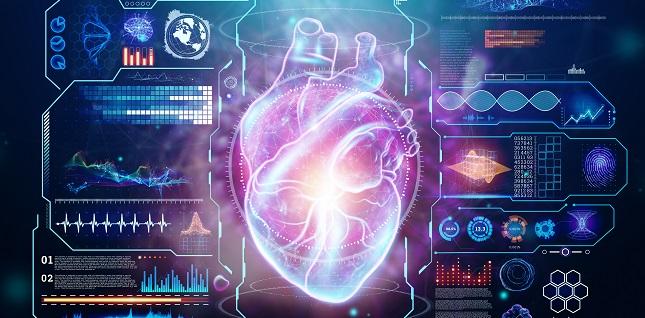
There are two types if machine learning tasks. Supervised training involves the use of training data to label inputs and outputs. Using this training data, supervised learning models can infer a function from data that has already been labeled. Experts label the training examples. Experts label the training examples. In other words, they learn by watching. They can also learn from human mistakes and improve their performance.
Unsupervised learning
Unsupervised learning, a powerful method for machine learning, is where data is not labeled and is instead interpreted according to previously established patterns. Self-learning is another name for this approach. Unsupervised Learning follows the same principles as supervised, but it aims to discover hidden patterns from data with ambiguous labelling. This type uses hidden state reparameterizations or backpropagation reconstruct errors to find patterns in unlabeled datasets.

Supervised learning
Email spam filtering is one of the most popular examples of supervised-learning. An old computer science approach may involve creating a program that uses a set of rules in order to determine whether an email has been marked as spam. However, this approach comes with significant limitations, such as the inability to be applied across languages. Supervised Learning is used to make data-driven predictions. There are many applications for this method. Take a look at the most common uses of supervised learning to get an idea of how it works.
Classification
Supervised classification is a common method of machine learning where objects are assigned to classes automatically based on numerical measurements. Functional mapping is used by classifiers to link the measurements and the class label. Machine learning and patterns recognition are two distinct ways to create classifiers. Both these methods use examples in order to train machinelearning systems. Supervised classification involves learning from other examples. The kappa factor is a common measurement of classification performance. It is impossible to create a fully supervised model of data but it is possible to make a classifier capable of correctly predicting objects.
Regression
A supervised-regression is a machine learning algorithm which predicts a continuous value from a list of discrete values. In supervised regression, data in the training and test sets have a linear relationship to the inputs. These are continuous numbers. This method is useful for classifying datasets, such as product sales data, by predicting whether a product is likely to sell in a particular market.

Face recognition
Face recognition is an important problem in computer vision. Machine learning algorithms must recognize all types of faces. While human beings can recognize faces well, machine vision algorithms must be equally adept. Deep learning algorithms take advantage of large amounts of data and create rich representations that help improve face recognition. These models are capable of outperform human face recognition. How can face recognition systems be improved? Find out how to overcome these challenges.
FAQ
How does AI work?
An artificial neural network is made up of many simple processors called neurons. Each neuron receives inputs and then processes them using mathematical operations.
The layers of neurons are called layers. Each layer has a unique function. The first layer receives raw information like images and sounds. These data are passed to the next layer. The next layer then processes them further. Finally, the output is produced by the final layer.
Each neuron also has a weighting number. This value is multiplied with new inputs and added to the total weighted sum of all prior values. The neuron will fire if the result is higher than zero. It sends a signal up the line, telling the next Neuron what to do.
This is repeated until the network ends. The final results will be obtained.
Who was the first to create AI?
Alan Turing
Turing was conceived in 1912. His father was a clergyman, and his mother was a nurse. After being rejected by Cambridge University, he was a brilliant student of mathematics. However, he became depressed. He began playing chess, and won many tournaments. He returned to Britain in 1945 and worked at Bletchley Park's secret code-breaking centre Bletchley Park. Here he discovered German codes.
1954 was his death.
John McCarthy
McCarthy was born 1928. Before joining MIT, he studied mathematics at Princeton University. There he developed the LISP programming language. He had laid the foundations to modern AI by 1957.
He died in 2011.
Is Alexa an artificial intelligence?
Yes. But not quite yet.
Amazon created Alexa, a cloud based voice service. It allows users interact with devices by speaking.
The Echo smart speaker, which first featured Alexa technology, was released. Other companies have since created their own versions with similar technology.
Some of these include Google Home, Apple's Siri, and Microsoft's Cortana.
What's the future for AI?
Artificial intelligence (AI) is not about creating machines that are more intelligent than we, but rather learning from our mistakes and improving over time.
Also, machines must learn to learn.
This would involve the creation of algorithms that could be taught to each other by using examples.
You should also think about the possibility of creating your own learning algorithms.
Most importantly, they must be able to adapt to any situation.
Where did AI get its start?
The idea of artificial intelligence was first proposed by Alan Turing in 1950. He stated that a machine should be able to fool an individual into believing it is talking with another person.
John McCarthy later took up the idea and wrote an essay titled "Can Machines Think?" In 1956, McCarthy wrote an essay titled "Can Machines Think?" He described the problems facing AI researchers in this book and suggested possible solutions.
Which industries use AI the most?
The automotive industry was one of the first to embrace AI. BMW AG employs AI to diagnose problems with cars, Ford Motor Company uses AI develop self-driving automobiles, and General Motors utilizes AI to power autonomous vehicles.
Other AI industries are banking, insurance and healthcare.
Statistics
- In 2019, AI adoption among large companies increased by 47% compared to 2018, according to the latest Artificial IntelligenceIndex report. (marsner.com)
- The company's AI team trained an image recognition model to 85 percent accuracy using billions of public Instagram photos tagged with hashtags. (builtin.com)
- Additionally, keeping in mind the current crisis, the AI is designed in a manner where it reduces the carbon footprint by 20-40%. (analyticsinsight.net)
- While all of it is still what seems like a far way off, the future of this technology presents a Catch-22, able to solve the world's problems and likely to power all the A.I. systems on earth, but also incredibly dangerous in the wrong hands. (forbes.com)
- That's as many of us that have been in that AI space would say, it's about 70 or 80 percent of the work. (finra.org)
External Links
How To
How to get Alexa to talk while charging
Alexa, Amazon's virtual assistant can answer questions and provide information. It can also play music, control smart home devices, and even control them. You can even have Alexa hear you in bed, without ever having to pick your phone up!
With Alexa, you can ask her anything -- just say "Alexa" followed by a question. She'll respond in real-time with spoken responses that are easy to understand. Alexa will improve and learn over time. You can ask Alexa questions and receive new answers everytime.
You can also control other connected devices like lights, thermostats, locks, cameras, and more.
You can also tell Alexa to turn off the lights, adjust the temperature, check the game score, order a pizza, or even play your favorite song.
Alexa can talk and charge while you are charging
-
Step 1. Step 1. Turn on Alexa device.
-
Open Alexa App. Tap the Menu icon (). Tap Settings.
-
Tap Advanced settings.
-
Choose Speech Recognition
-
Select Yes, always listen.
-
Select Yes, please only use the wake word
-
Select Yes to use a microphone.
-
Select No, do not use a mic.
-
Step 2. Set Up Your Voice Profile.
-
Select a name and describe what you want to say about your voice.
-
Step 3. Test Your Setup.
Speak "Alexa" and follow up with a command
For example, "Alexa, Good Morning!"
Alexa will reply if she understands what you are asking. Example: "Good Morning, John Smith."
Alexa will not respond to your request if you don't understand it.
If necessary, restart your device after making these changes.
Notice: If you modify the speech recognition languages, you might need to restart the device.